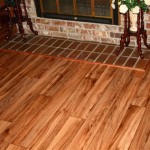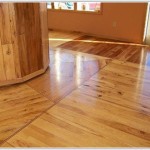Laying Wood Flooring On Joists: Essential Aspects for Impeccable Results
Laying wood flooring on joists involves carefully navigating multiple aspects to ensure an exceptional result. By understanding and adhering to best practices, you can create a sturdy and visually stunning wood floor that will enhance the ambiance of your home for years to come.Joist Spacing and Subfloor Preparation:
Proper joist spacing is crucial for supporting the weight of the flooring and preventing deflection. Determine the joist spacing and ensure it meets the manufacturer's recommendations. Before laying the underlayment, inspect and repair any unevenness or damage in the subfloor to create a smooth and stable base for the flooring.Underlayment:
Underlayment plays a vital role in reducing sound transmission, adding cushioning, and assisting in moisture control. Choose an underlayment that is compatible with the flooring material and provides the desired level of protection. Install the underlayment according to the manufacturer's instructions to ensure optimum performance.Acclimation:
Before laying the wood flooring, it is essential to acclimate it to the environment where it will be installed. This process allows the wood to adjust to the temperature and humidity levels, minimizing potential issues like buckling or shrinking. Allow the flooring to rest in the room for several days before beginning installation.Moisture Barrier:
Installing a moisture barrier beneath the wood flooring is crucial in areas with higher moisture levels or potential for water damage. A polyethylene sheet acts as a barrier, preventing moisture from seeping into the subfloor and damaging the flooring. Ensure the moisture barrier is properly installed and sealed to maintain its effectiveness.Installation Techniques:
Depending on the type of wood flooring, various installation techniques can be used. Floating floors are installed without nailing or gluing, while nail-down floors are secured using nails and adhesive. Tongue-and-groove planks are interlocking and usually installed using a flooring nailer. Carefully follow the manufacturer's installation instructions to ensure proper alignment and secure attachment.Finishing:
Once the wood flooring is installed, it requires a protective finish to enhance its durability and aesthetics. Choose a finish that complements the type of wood and desired sheen level. Apply the finish according to the manufacturer's recommendations, using a brush, roller, or sprayer. Allow ample time for drying and curing before using the floor. Remember, meticulous attention to detail and adhering to best practices are essential for achieving a flawless wood floor on joists. With proper planning, careful execution, and quality materials, you can create a long-lasting and captivating wood flooring that will add value and beauty to your home.
How To Install Hardwood Floors Directly Over Joists Wood Floor Fitting

Fitting Wood Flooring Straight To Joists And Beyond Blog

Floor Fitting Freshwoods Experts In Timber Flooring

How To Lay An Engineered Oak Floor On Joists

Wood Flooring Blog Laying Oak Onto Joists Peak

How To Fit Wood Flooring Onto Joists Ambience Hardwood

Laying Hardwood Flooring On Second Story With No Subfloor

How To Fit New Floorboards

How To Install Hardwood Flooring Step By Forbes Home

Junckers Laying A Floor Over Batons
Related Posts








